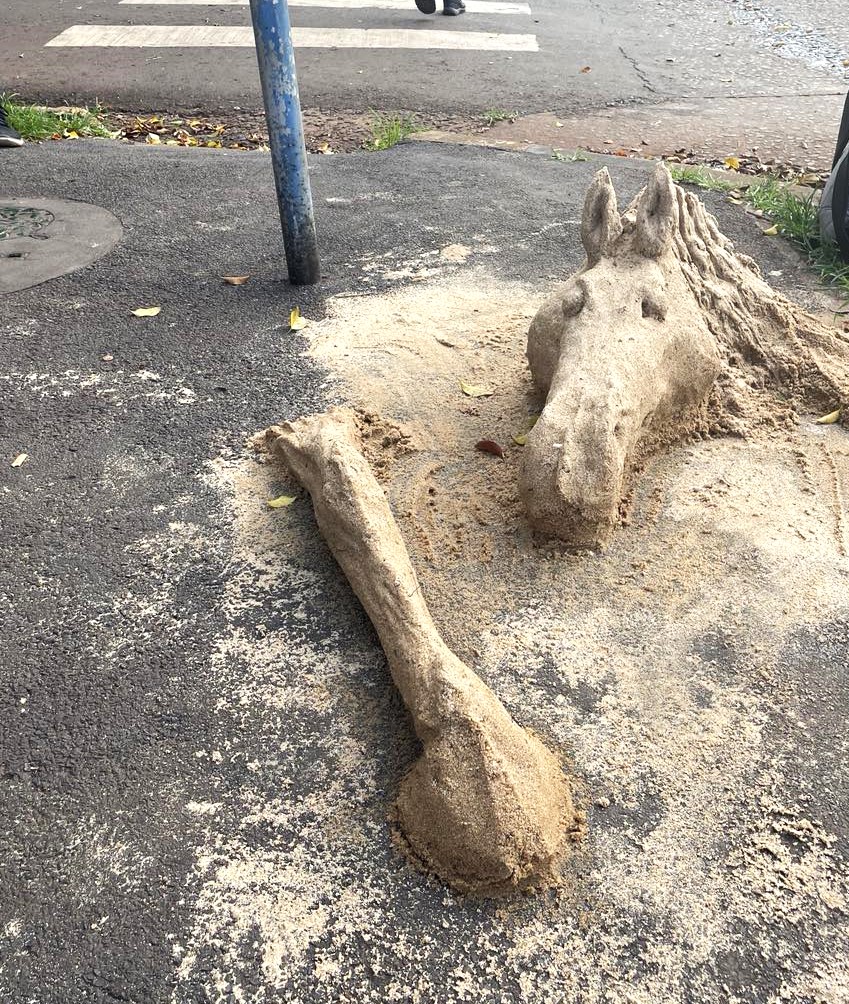Key Highlights of Argentina That Catch the Attention of Every Tourist
Every country has its distinctive features, cultural aspects, and attractions that make it stand out. Argentina’s unique perks make it ‘out there’ in a positive. Over 15 amazing things set Argentina apart from other South American nations, including its neighboring countries.
Yerba Mate Drinking Tradition
Mate, a traditional South American herbal tea, is a common sight in Argentina. Locals often share mate in social settings, and tourists may be offered a taste of this cultural beverage by drinking through a metal straw called a bombilla. It is a hot beverage made from the leaves of the yerba mate plant. It is a caffeinated drink, but its caffeine content is lower than coffee’s
You will also see various kinds of Yerba Mate gourds and bombilla straws, ranging from traditional to modern designs, in souvenir shops throughout the country.

Yerba Mate Tea
Fernet and Coke-An Argentina’s Signature Cocktail
“Fernet and Coke” is a well-liked cocktail in South American Countries, especially in Argentina; this beverage has garnered an almost cult-like following. This cocktail combines Fernet, an Italian amaro known for its herbal bitterness, with Coca-Cola. While the proportions may vary according to individual taste, a popular recipe involves blending Fernet and Coca-Cola over ice. Fernet’s bitter notes harmonize with the cola’s sweetness, resulting in a distinctive and flavorful drink. The versatility of Fernet allows it to be consumed in different ways, whether before a meal, after dinner as an apéritif, or during social gatherings.
Typically, Fernet is made from various herbs and spices with a base of distilled grape spirits (45% alcohol by volume). The spices include cardamom, saffron, and herbs such as myrrh, chamomile, rhubarb, and aloe.
Fernet was introduced to Argentina by Italian immigrants, and over time, it became ingrained in Argentine culture. However, this cocktail gained popularity in the 1980s and 1990s. Argentina accounts for over 75% of the total global consumption of Fernet.
Our fondness for it was so compelling that we couldn’t resist buying a couple of bottles at the duty-free shop to bring home.

Fernet and Coke
Great Coffee Culture and Norms
A noteworthy tradition is the complimentary offering of sparkling water (agua con gas) with your coffee, allowing you to refresh and cleanse your palate.
A Unique Cultural Tradition in Argentina
Clapping upon landing is a widespread and consistent practice in Argentina, mainly observed on local flights. Passengers clap to express relief, gratitude towards the pilots and crew, and excitement upon safely reaching their destination. The consistent occurrence of clapping in Argentina sets it apart as a unique cultural tradition, adding a distinctive touch to the travel experience in the country.
Unusual Drinking Habits: Coffee and Alcohol Timings in Argentina
Interestingly, in Argentina, you will be surprised to see people drinking beer with their breakfast and coffee at 7 pm, unlike the rest of the world, where dinner is typically served at that time. People often stop by a coffee shop to read the newspaper or watch the news on their way back from work.
Dinner After 10 pm is a Typical Argentina Norm
In Argentina, people often eat dinner around 10 pm or even later. Some restaurants offer incentives for dining earlier, around 7 or 8 pm, where you may not need to make a reservation.
Alfajores Made of Flour and Dulce de Leche
Argentinians have a deep affection for alfajores, being the largest consumers globally. Alfajores are crumbly bread biscuits that sandwich dulce de leche, jam, or mousses. This Moorish dish was introduced by the Spanish and has since become an integral part of Argentina’s culinary landscape, essentially becoming their national cookies.
Our appreciation for them was so strong that we couldn’t resist purchasing some at the duty-free shop to bring home.
Argentina’s Unbeatable Meat Consumption Habits and Parrilla Culture
Argentina is famous for its beef and traditional barbecue, known as “asado.” The country has historically been one of the top consumers of meat per capita in the world.
Argentina is famous for its delectable beef, commonly called “asado,” served at its exceptional meat restaurants parrillas nationwide. Particularly, the Palermo district of Buenos Aires stands out as a hub for various parrillas.
Not only do they specialize in beef, but Argentina also excels in barbecuing lamb. Moreover, the consumption of guanaco meat, particularly in the Patagonia region, such as El Calafate and El Chaltén, is a pretty notable delicacy.
Fine Dining and Cuisine
Argentina offers exceptional culinary experiences despite being classified as a lower-income country. Having traveled to Europe, America, and other South American countries, we found that Argentina’s culinary realm is unparalleled.
The restaurants offer a wide range of international cuisines. In Buenos Aires alone, you can find Malaysian, Mexican, Cuban, Peruvian, Greek, Italian, vegan, and an array of modern, traditional, and classic restaurants at very reasonable prices. For just under $50, you can have a high-end dining experience with paired wine and dessert in a fantastic ambiance.
Not only do they excel in cuisine choices, but the professionalism of the working staff and kitchen is remarkable, something we occasionally miss here in many developed and wealthy countries.

A woman walking dogs in Buenos Aires
Pets in Argentina: A Country of Animal Lovers
In Argentina, dogs are prevalent, and recent research indicates that the country boasts the highest number of pets per inhabitant globally in the last decade. Eight out of ten Argentine families have at least one pet, with dogs leading at 81%, followed by cats at 52%. Additionally, people commonly keep fish, turtles, and hamsters as pets.
Money Exchange-Cambio
Argentina has a unique currency exchange approach, introducing various rates and options. Regarding payment or currency exchange, you might be asked whether you want to pay in Argentine pesos, U.S. dollars, or pounds.
The challenge arises with three different rates: the official, blue, and black rates. The blue rate tends to double the official rate, creating a significant difference. It’s important to note that while ATMs typically use the official rate, engaging with these informal exchange services may offer access to more favorable rates.
If you’re looking for the blue or black rates, you must find a “Cambio,” an exchange service. People openly advertise cambio services, especially in tourist spots. Everyone in Argentina seems to be seeking U.S. dollars, turning it into a side hustle for many individuals, including Airbnb hosts, coffee shop owners, and even one of the physicians we’ve encountered.
Warm Hospitality
Argentinians are renowned for their warmth and friendliness. Visitors often appreciate the welcoming nature and the eagerness of locals to assist or engage in conversations.
Spanish or English?
English is not commonly spoken in Argentina. While you may find some level of English proficiency among Argentinians in tourist areas and major cities, English speakers may be less common in more rural or off-the-beaten-path regions.
Tango and Sports Culture
Argentina, the birthplace of tango, offers tourists the chance to witness spontaneous tango performances on the streets of cities such as Buenos Aires. The enthusiasm for dance and music is deeply woven into the culture.
Similarly, Football (Soccer) occupies a crucial role in Argentine culture, and visitors can anticipate encountering an immense passion for the sport. In various parts of the city, one can witness the images of soccer heroes gracing walls and adorning the interiors of coffee shops and pubs.
Darwin’s rhea-Flightless Birds
Flightless birds, akin to ostriches, abound in Patagonia and are impossible to overlook. People have a tradition of consuming their eggs. Our tour guide joked that the entire neighborhood could feast on the omelet with just one egg.
Scientists named these flightless birds after Charles Darwin, who mentioned them in his book “The Voyage of the Beagle.” These birds are different from the ostriches that are native to Africa.
Italian and Spanish Heritage
Due to its demographic composition, Argentina stands out from other South and Mid-American countries. Most Argentinians trace their ancestry to Europe, with a notable influence from Italian and Spanish immigrants. This European heritage is evident in the country’s language, customs, and cuisine, setting it apart in its cultural landscape.
However, you will encounter more indigenous appearances in the Patagonia region than in the rest of the country.
Street Performances at Traffic Stops in Argentina

Street Art (a sand sculpture) in Córdoba, Argentina
Ball jugglers are a common sight at traffic stops in many South American countries. Argentina, in particular, presents numerous instances of this phenomenon.
In Argentina, you’ll also encounter a spectrum of artistic expression, ranging from classical sculptures to contemporary installations, lively street art, and freely accessible art museums that reflect people’s deep-rooted love for art.
The photo above is of one of the street artists who created this masterpiece with a bag of sand and then destroyed it after an hour. We captured this image while we were sitting inside the restaurant.
